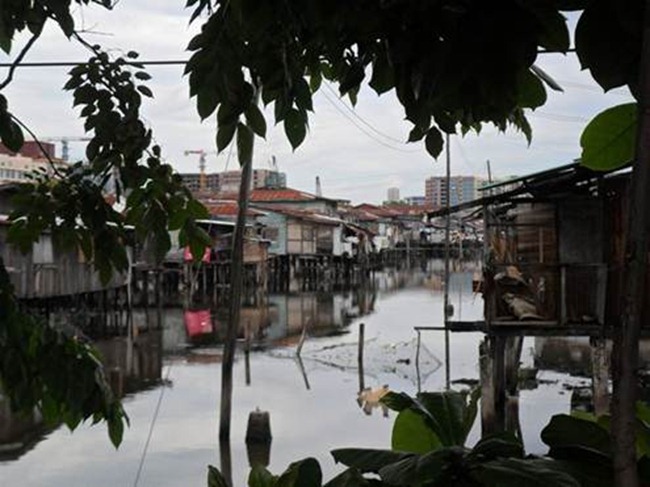Kota Kinabalu, Capital City of Sabah N06 00 76 E116 03 32

|
Kota Kinabalu, what a fabulous name and as we get further into Sabah the names become more complex and tantalizing. The locals say that they can spot a foreigner when he/she tries to say Kinabatangan mid-sentence. There is no old world charm or character to Kota Kinabalu; it was razed during the last war to try to stop the Japanese invading and again toward the end to drive them out. The result is a not very attractive post war town built to a grid system once called Jessleton and now named Kota Kinabalu. This has been something of a revelation to us as we had no real idea of the impact of the 2nd world war on relatively undeveloped countries like Sabah. My uncle served out here and in Burma during the war and spoke of it as one of the most demanding times in his life but I had not really understood the implications of climate, fragile indigenous peoples or frightening Japanese regimes. Having seen the terrain (even now there are almost no roads) and experienced the climate with its debilitating humidity, I can much better understand what these men in the armed forces had to cope with and, of course, this was just the tip of the iceberg because they were engaged in unorthodox armed warfare not just surviving in a hostile tropical environment. I well remember my uncle Ted’s loathing of leeches, we haven’t seen any but know they are there in the moister jungle areas. Day after day of nervous tension and sapping heat must have been as much as the human body could stand and as we know, many couldn’t. Thanks uncle Ted and all those others who suffered here. Kinabalu is the name of the largest mountain in the Malay Archipelago. Just north east of the town it spreads itself wide and stands at approximately 4,095 metres. I say approximately because apparently it is still rising at about 5mm a year. It is the highest peak between the Himalayas and the mountains of Papua New Guinea.
The town of KK is the capital of Sabah and is a city of stark contrasts. This part of Malaysia seems much poorer than peninsular Malaysia but it still has its luxurious developments cheek by jowl with shanty towns.
We stayed in a marina complex with 2 large hotels, a golf club and 3 swimming pools…but just over the road from the beautifully manicured golf course was a large water village. This is not flooding, the houses are built on stilts over the lagoon.
Although the quality of the housing is shanty like, the local kids seem happy and well and the people friendly.
|



